November
2012
Fairey
Fulmar Mk.II
Martin
Baltimore Mk IIIA
T-34/76
Model 1940 Tank
|
November
2012 |
||
![]()
![]() Selected
WW2 70th Anniversaries this month:
Selected
WW2 70th Anniversaries this month:
Between 2009 and 2015, I will follow a general modelling theme that marks selected 70th Anniversaries from WW2.
|
Martin
A-30 Baltimore nose glazing |
4 November 1942 - Rommel's forces withdraw from El Alamein under the cover of night and retreat toward the West. 8 Nov - Operation Torch. A 74,000 strong Allied force including many fresh US troops facing their first combat, begins the first major amphibious landings of WW2 with an assault on the shores of Vichy French-controlled North Africa. The reaction of the French defenders is mixed, with strong resistance in some areas and a sympathetic reception in others. With a sound foothold at the western end of Africa, the Allies begin a massive build up of forces with the intention of advancing into Tunisia and attacking Rommel from the rear. In response, the Axis also begin a massive reinforcement of Tunisia by air and sea. On 17th Nov the two forces meet at Djebel Abiod and fighting breaks out across a wide front. 19 Nov - The Red Army begin Operation Uranus, targeting poorly equipped Hungarian and Romanian units surrounding Stalingrad. The Axis line collapses and the powerful German 6th Army is surrounded, with its 290,000 men and their equipment trapped inside the Stalingrad perimeter. The weather turns and the Russian winter sets in, compounding the Axis problems. Even though their air freight capacity available is less than an eighth of the capacity actually needed, the Luftwaffe is ordered to begin a futile attempt to supply and sustain the 6th Army by air. 27 Nov - Operation Lila, an attempt by the Germans to seize the French Fleet in Toulon is frustrated on 27th Nov. Amidst fierce fighting on the dock-sides, the French Navy scuttles 77 of its own major ships, including 3 battleships, 7 cruisers, 28 destroyers and 20 submarines to prevent them falling into Nazi control. Although disappointed, Hitler considers their denial to the Allies a lesser but equally welcome outcome. |
809 Sqn Fleet Air Arm, HMS VICTORIOUS, Operation Torch, November 1942
Vista (SMER) 1/72, with Airwaves brass etch wing fold
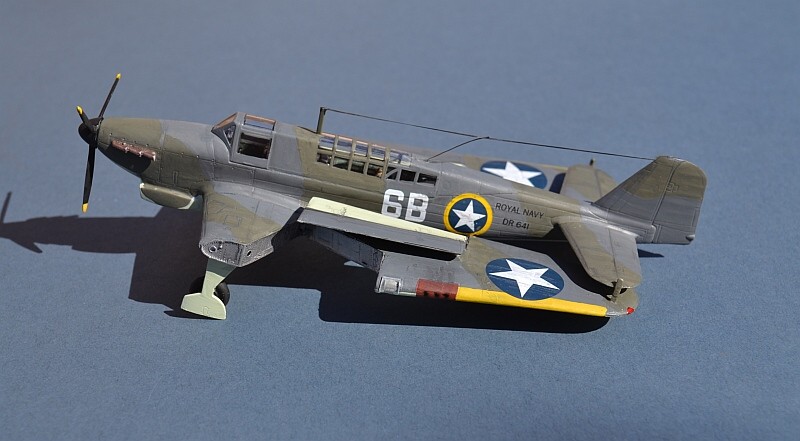
Although it was certainly no star performer, by an accident of history the Fairey Fulmar was in the right place when it was needed and holds the title of the Fleet Air Arm's highest scoring fighter. Developed as a replacement for the Skua in the Fighter/Reconnaissance role, it saw most success in the Mediterranean, defending convoys against Italian and German bombers, but also played pivotal roles in the hunt for the Bismark, the Arctic convoys, the Indian Ocean and North Africa. It also provided night fighter cover for the famous Taranto attack, destroying seven Italian fighters.
|
Two
folded Fulmars parked on deck alongside two Sea Hurricanes |
Derived from the obsolete Fairey Battle fast bomber, the Fulmar was developed in great secrecy and saw front line service from June 1940 until 1944, including development as a night fighter. When it first appeared it was a big disappointment to FAA pilots, since it was already outclassed by the opposing Axis aircraft due to its size and the requirement to carry an Observer, but compared with its predecessors, its heavier armament, excellent range/endurance and improved speed were certainly welcome. During Operation Torch, participating Fleet Air Arm aircraft were temporarily re-marked in US markings, as it was felt that the French defenders would be more sympathetic to the US and therefore less likely to attack them. I always feel that folded kits are a terrible disappointment, turning elegant and sleek naval aircraft into mechanical monstrosities. In truth, you could never really call the Fulmar elegant or sleek, but the complex wing folding arrangements seem particularly awkward. However, I have quite a few Fulmars in the stash, plus the Airwaves photo-etch conversion turns this into a pretty unique shape, so this one was sacrificed as an experiment. The pseudo USN markings for Operation Torch only add to the unreal feel. This particular kit mould was originally produced by Vista, a Czechoslovak company that seems to have disappeared without trace. It was then re-issued by SMER, then Revell, then Airfix. This is the SMER version, with identical markings to the Vista original. |
The kit is simple but well engineered, with only basic detail and parts count but some nicely engraved surface features, if perhaps slightly too deeply engraved in places. It fits together very well with the sole exception of the wing roots, which can leave gaps if you are not careful. The undercarriage doors are also a weak point - most of the builds I can see on the web have made the same mistake as I did and fitted them too low on the wheel leg.
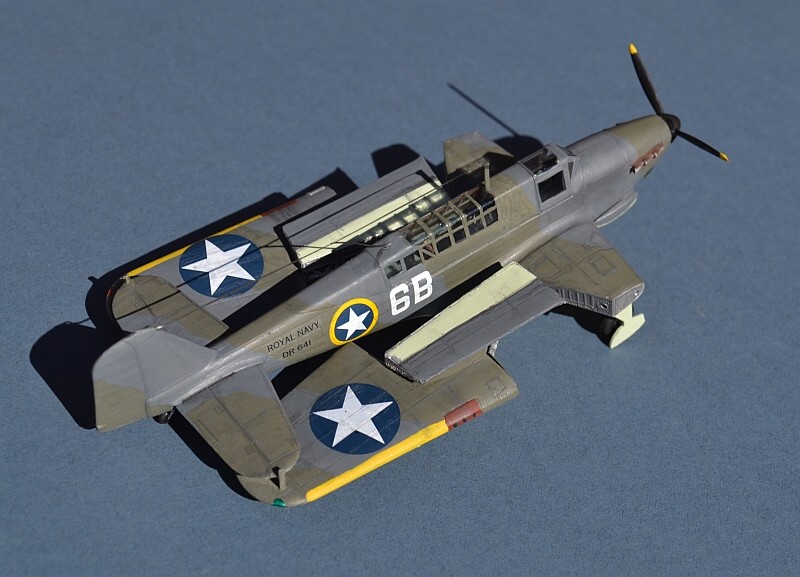
The lack of moulded gun ports is surprising, but a black pen quickly solves the problem. The pilots cockpit is basic, but adequate whilst the observer's interior is pretty bare and benefits from some sprue additions to represent the radio equipment. Seat belts are made from brown paper (ex-envelope).
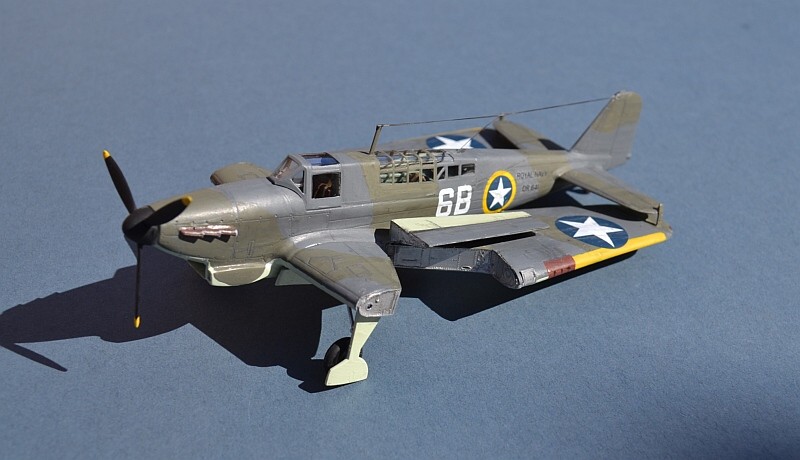
The Airwaves etch fits reasonably well, although I used quite a lot of Tippex filler to ensure smooth edges. Chopping up the wings does require some thought, but isn't really difficult. I made up both wings as per the instructions then cut them into their 3 parts - centre lower fuselage and the two separate wings. I could then cut along the upper wing fold lines without too much difficulty. One area I missed is the drooping of the outer ailerons to clear the fuselage sides, which is not immediately obvious in photos and not mentioned at all in the Airwaves instructions. I also made up and added some plastic strip and sprue clips on each wing tip; on the real thing these hold the wing to the tailplane and on the kit they provide some very welcome added support for the folded wing assembly.
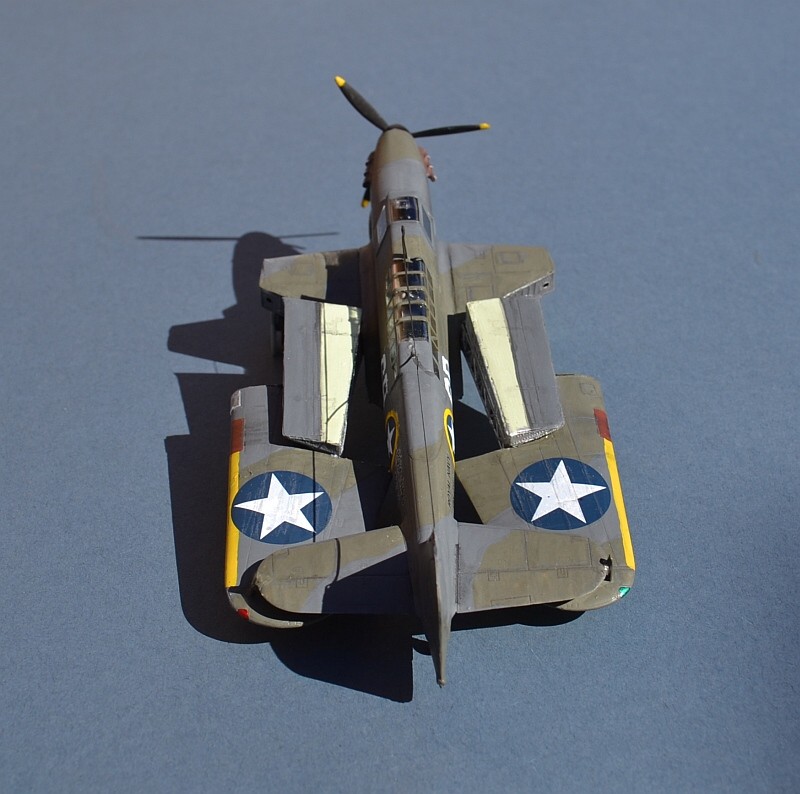
As is my normal habit, the canopy frames were done freehand with a thin brush; they can look a little daunting to start with, but the frames are well defined. Get the brush type and paint consistency right, apply a little patience and care (don't be afraid to wipe off with some white spirit and start again if you get it wrong) and "bob's your uncle".
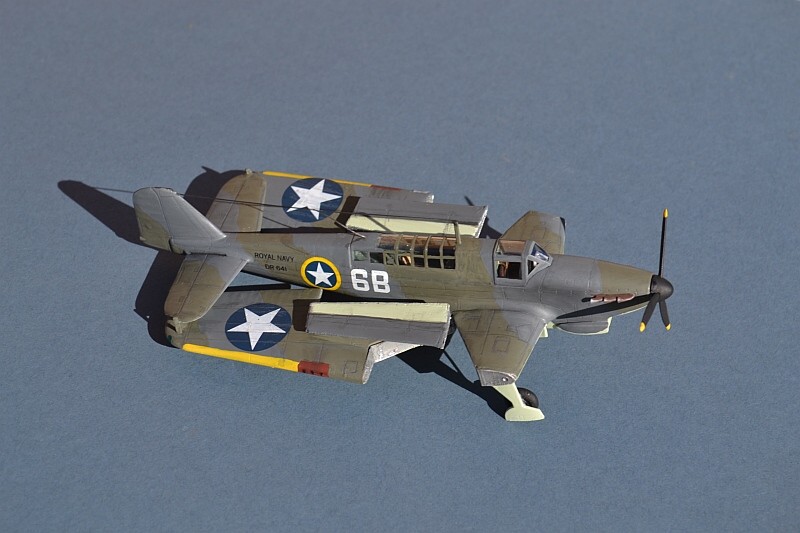
Other than that there is little to say; paints are enamel, Humbrol topsides and Revell below, with a dark oily wash and acrylic (W&N Galleria) matt varnish to finish. As with my previous build, I can heartily recommend this as an easy and rewarding low-cost build of one of the FAA's most important fighter aircraft.
.... and here she is at Yeovilton, sitting on the tailplane of the real thing!
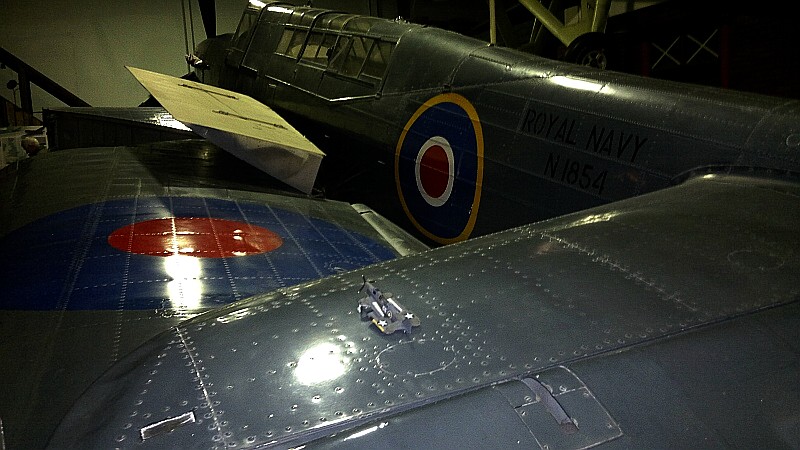
More FAA WW2 Aircraft my RN Props pages
Martin A-30A Baltimore Mk.IIIA
223 Sqn RAF, 232 Bomber Wing, Western Desert Air Force, November 1942
Frog 1/72, with own decals.
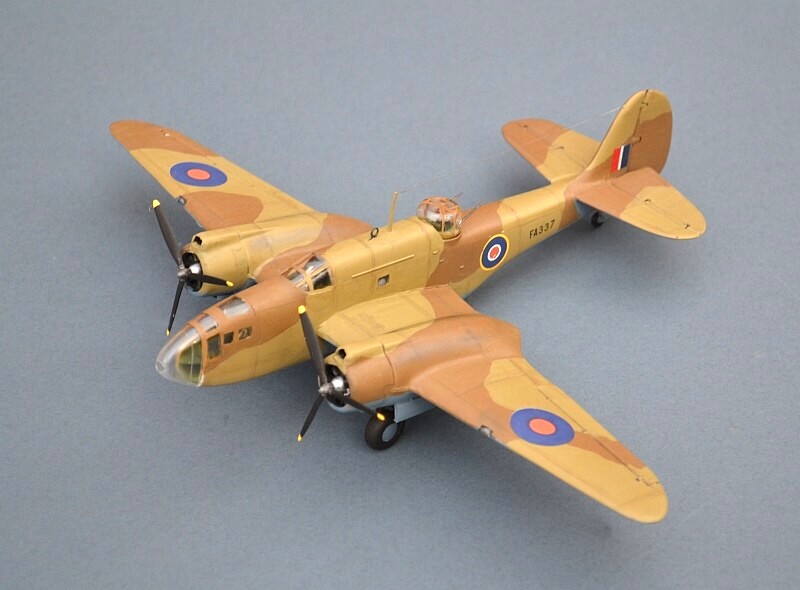
|
| |
|
The Baltimore was a highly successful development of Martin's earlier Maryland light bomber, with a larger fuselage and other improvements produced at the request of the French and the RAF. A sturdy if slightly temperamental aircraft, particularly on the ground where it was very prone to "ground looping" if not handled carefully, it was originally ordered for the French Air Force but the order was passed to the British after the fall of France in 1940. The aircraft served in reasonable numbers with RAF and Commonwealth squadrons (Australian & SAAF) in North Africa and the Mediterranean as the light bomber backbone of the Desert Air Force. It also served with the Free French Air Forces. |
A
flight of Baltimores framed in a lower rear gun hatch |
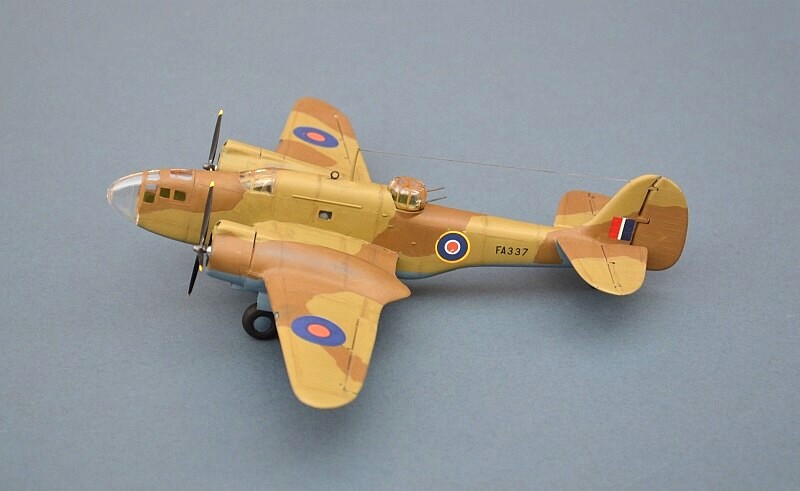
|
| |
|
A
Baltimore in combat over the Western Desert |
Its narrow and deep fuselage, reminiscent of the Hampden, was not an ideal layout, severely limiting the ability of the crew to move around the aircraft, but its high speed, agility and reasonable bomb load were a welcome addition to the Allied air forces. The Mark IIIa was the first Baltimore variant supplied as Lend-Lease, replacing the earlier variants' open gun position or powered Boulton Paul turret with a twin 50 cal armed Martin version. Baltimores saw wide action in the close air support role, from Alam-el-Halfa and El-Alamein, through the Tunisian Campaign, the invasion of Sicily and on to the Italian mainland. After WW2, the robust and lightweight Baltimore saw further service as a high speed research aircraft with the US Navy, capable of Mach 0.74 in a dive. 223 Sqn RAF originally started life during WW1 as B Flight, Royal Naval Air Service, a general duties squadron flying Sopwith 1½ Strutters and Airco DH.4s, based at Myteline on the Aegean island of Lesbos. |
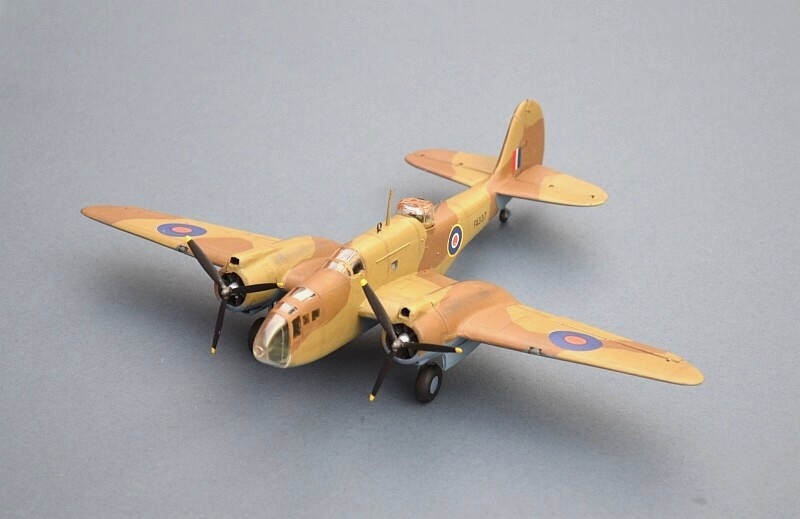
This is another "waif" Frog kit that I picked up very cheaply (a few pounds) several years back as a dirty bag of anonymous bits. In fact, I first thought it was a Maryland when I bought it and had intended to finish it in Malta-based Fleet Air Arm markings. A very few (three?) Baltimores did see naval service, but there are few pictures to use as references (I only found one and it was post-war overall silver) and in any event, I felt that the aircraft ought to be in its original desert guise as this is where it made its most important contribution to the war.
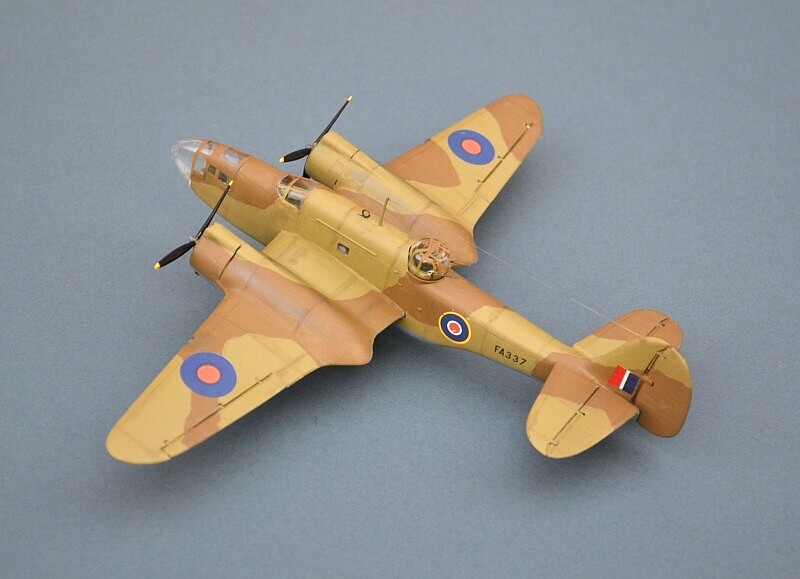
The Baltimore was in fact a very successful design, but it gets comparatively little attention since it was not used by the USAAF. There are a couple of more modern short-run kits available, but for a very long time Frog's offering was the only one available. First issued in 1963, the kit is very basic, representing (I think) the later Mk IV variant. Parts fit is variable; the wings and fuselage fitted very well, but the wing and tailplane to fuselage joints were very bad. Panel lines are lightly raised, but the transparencies are thick and not particularly clear, even after dipping in Klear. My kit had no transfers with it, so these are some generic ones from my spares box.
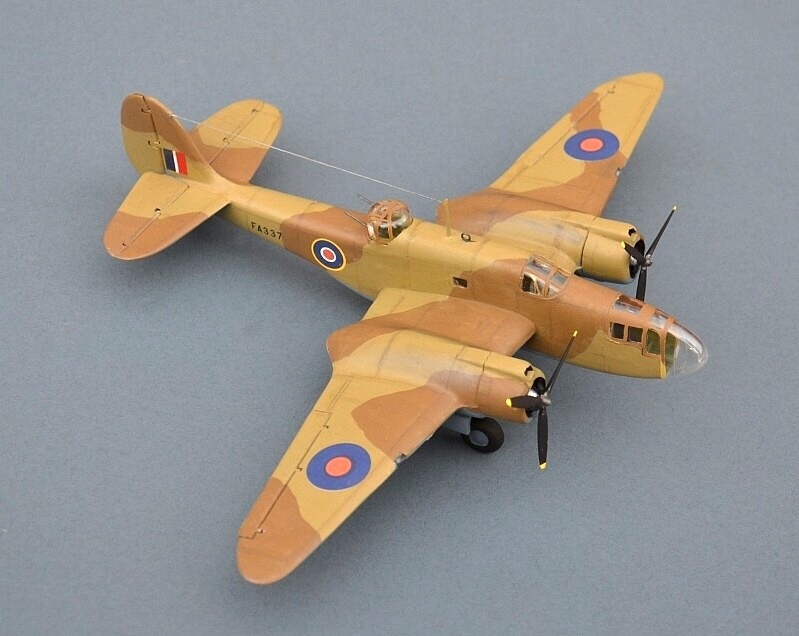
See more Desert Air Force aircraft on my Friends & Allies pages
T-34/76 Tank
Soviet 5th Guards Tank Army, Operation Uranus, Stalingrad, November 1942
Matchbox/Revell 1/76.
The old Matchbox T-34 kit can now be obtained from Revell. A simple but good looking kit with typically high Matchbox mould and fit quality, it also comes with the excellent trademark diorama base.
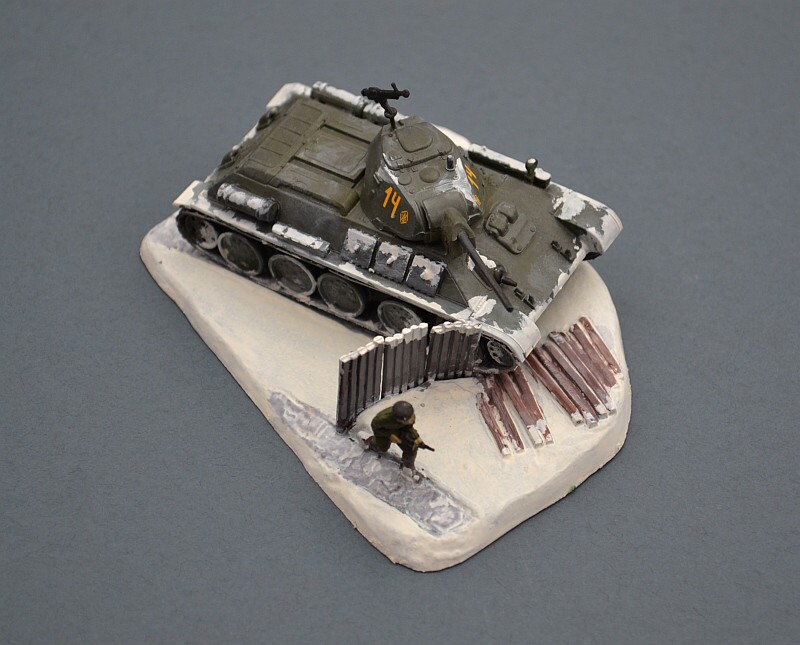
|
| |
|
|
The T-34 tank marked a step change in armoured vehicle design and its design influence can still be seen in today's MBTs. With its welded sloping armour and excellent mobility, its arrival on the Eastern Front was a rude awakening to the Nazis. Like most tanks of its time, in its original form it was underarmed and reliability was variable, but in combat it proved at least the equal of most German tanks, and best of all it was cheap, easy and quick to produce. In a very real sense, this is the weapon (along with its tank crews) that won WW2 for the Allies. |
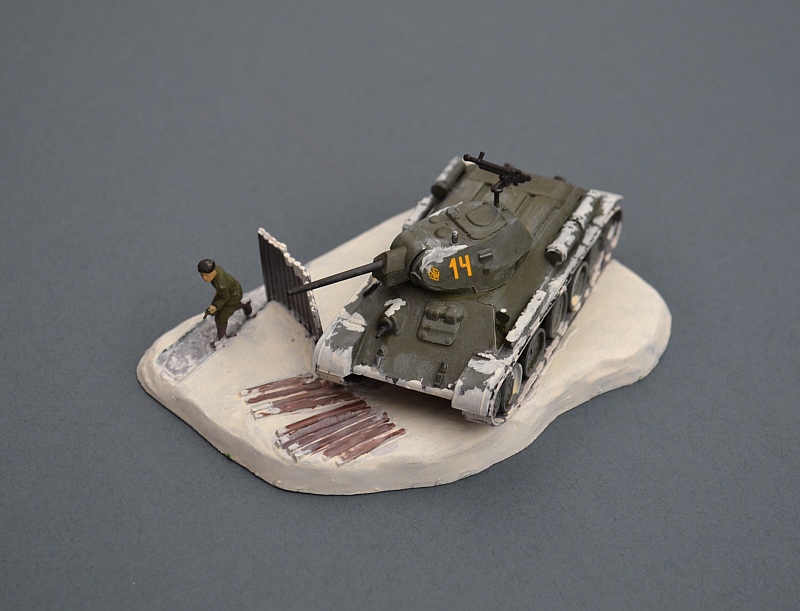
|
In light of the German advance, in 1941, Soviet tank production was largely moved to emergency factories behind the Ural mountains, yet over 40 % of the T-34s produced during WW2 were still made in the Stalingrad Tractor Factory, many during the siege. With the factory surrounded by heavy fighting in 1942, the situation there grew desperate: manufacturing innovations were necessitated by material shortages, and stories persist that unpainted T-34 tanks were driven out of the factory directly to the battlefields around it. Stalingrad maintained steady T-34 production until September 1942. By 1958 when production finished, over 84,000 T-34s had been built with many still in active service at the end of the century. In November 1942, the Red Army launched Operation Uranus. Taking advantage of the German's poor preparation for winter weather and targeting the weaker Axis units surrounding Stalingrad, by 22 November, the Soviets had encircled the 290,000 men of the German 6th Army and settled down to a winter war of attrition, as the Germans were gradually starved into surrender. |
|
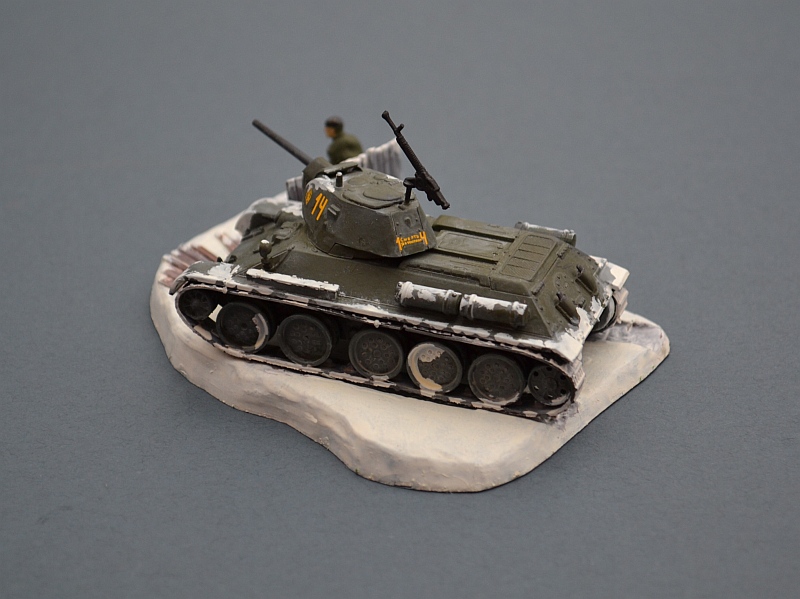
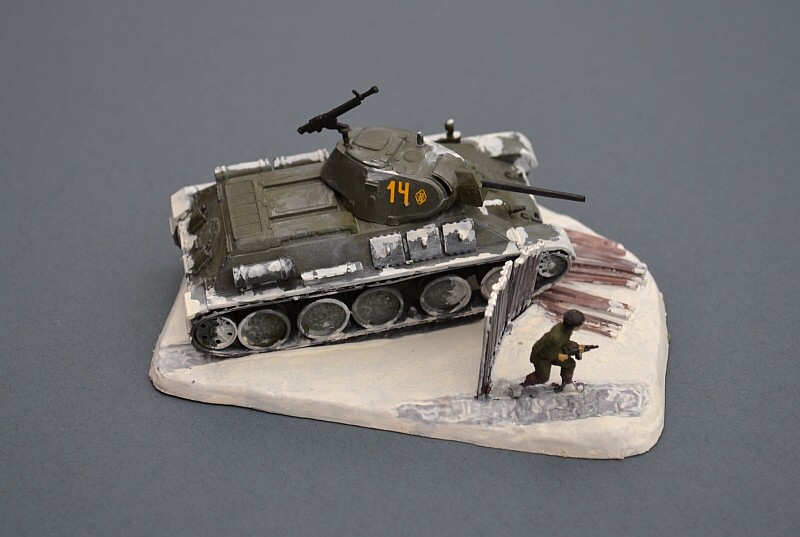
More Tanks and AFVs on my Dark Side pages
Link
to previous month Link
to Next Month
www.gengriz.co.uk
Background
Image - A Fulmar folds its wings after landing
©
Crown Copyright IWM (A 7977)